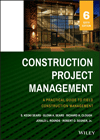Best Project, Airports/Ports: Prince Mohammed Bin Abdulaziz Airport












The rich history of Islamic architecture and the beauty of the region's palm trees and volcanic mountains inspired the design of the $1.2- billion Prince Mohammed Bin Abdulaziz International Airport expansion in Medina, Saudi Arabia—the first public-private aviation project and concession in the country and the Gulf region.
The airport, first built as a regional facility in 1950, now is designed to handle 8 million passengers a year and larger aircraft to serve Islam's second-holiest city, which attracts millions of Muslim pilgrims annually—most from other countries. The project's first phase adds a three-level, 156,000-sq-meter main terminal, with 16 aprons, 26 auxiliary buildings and 10 kilometers of taxiways. Two runways were expanded and modernized to meet international standards. Next to the terminal, six air-conditioned pavilions with tensile-fabric roofs will accommodate heavy passenger loads at peak periods.
The project involved 5,300 participants from 34 countries; about 95% of design was done offshore. "Shared web-based project communication was used from Day One, providing an active tool for information flow across different time zones," Maurice Rosario, project director for lead architect Scott Brownrigg, told ENR.
Rosario points to major use of modular construction. "The roof structure … was designed as a kit of parts, manufactured off-site, assembled on-site, and lifted and installed using mobile cranes only," he says. This process required intricate computer analyses to check the structural behavior of the assembled palm-tree-shaped columns during lifting and staged installation, Rosario adds. He credits early interaction among structural designers, steel fabricators and others with keeping project component manufacture, delivery and installation on schedule at the remote location with little industrial support.
Project contractor TAV Construction says that, despite logistics that one judge called "truly challenging" and a 5,000-person on-site workforce, there were no fatalities in 22.8 million hours worked and a 0.17 lost-time injury frequency rate. Site notices were posted in up to five languages and supported by pictograms for the workers, who were primarily from Turkey, the Philippines, India and Pakistan. Project Director Cumhur Kaur notes extensive post-accident analysis and retraining for participants, when needed.
The project includes a strong commitment to sustainability. One project brochure cites a quotation by the Prophet Mohammed: "Do not waste water, even if you are at a running stream." More than two-thirds of outside parking spaces are covered with material that has high solar reflectivity, and construction materials had 33% recycled content. Water reuse and specialized plantings cut water demand by 80%. The facility is the first aviation project outside the U.S. to gain LEED Gold certification.
The new airport is expected to boost the local economy significantly, says a recent analysis by economic consultant Frost & Sullivan. It forecasts as many as 20,000 new jobs from airport operations and expected related commercial and residential development. Two potential additional construction phases could boost capacity to 16 million passengers by 2037.
Project Team
Owner: TIBAH Airports Development Co.
Contractor: TIBAH Consortium (TAV Airports Holdings, Al Rajhi Holding, Saudi Oger)
Lead Design Firm, Architect: Scott Brownrigg/GMW Architects
Independent Engineer: CH2M
Engineers: URS-Scott Wilson: airside infrastructure, MEP and structural concepts; Khatib & Alami: landside infrastructure, utilities; Cakıt Muhendislik: structural steel; OSM Muhendislik: reinforced concrete; Moskay Muhendislik: mechanical; HB Teknik: electrical; Sigal Muhendislik: landside pavement, traffic; DS Mimarlik: landscape works; Etik Muhendislik: fire consultant
Operating Service Provider: TIBAH Airports Development Co.







